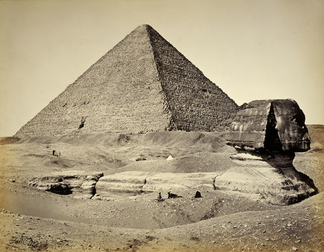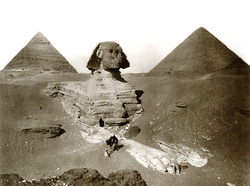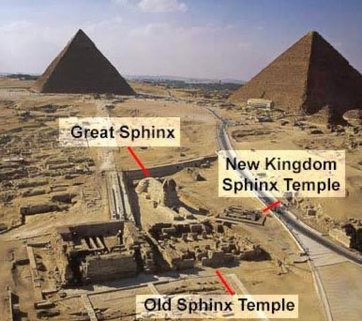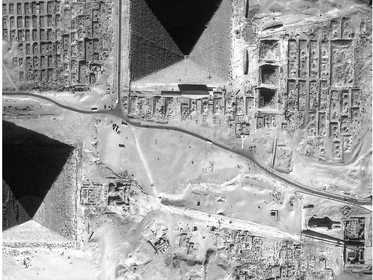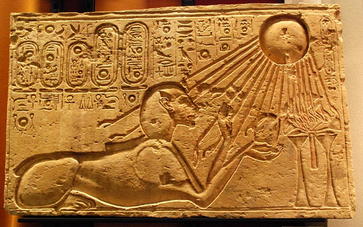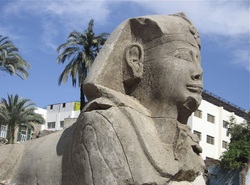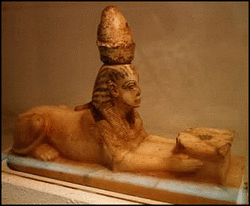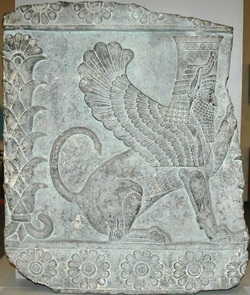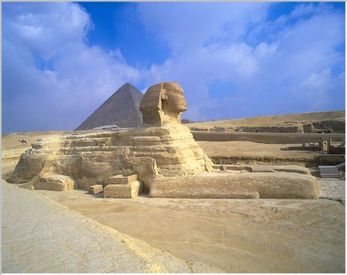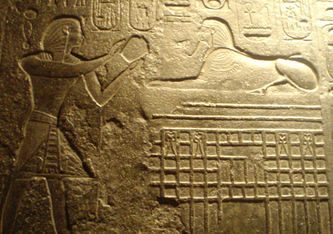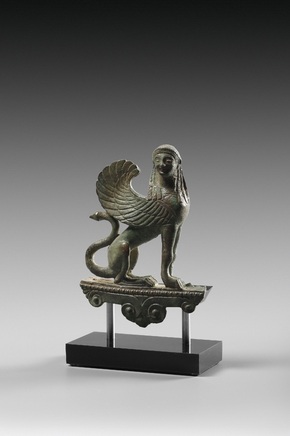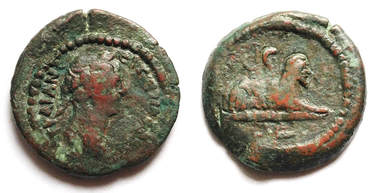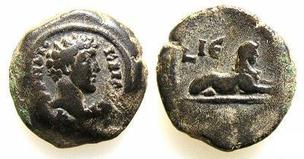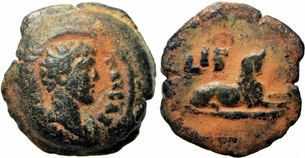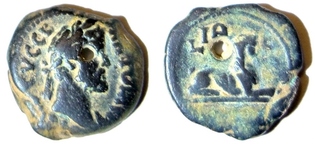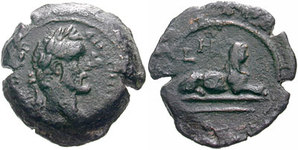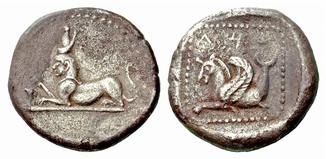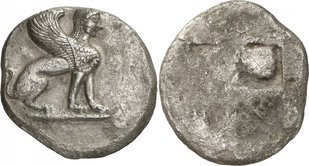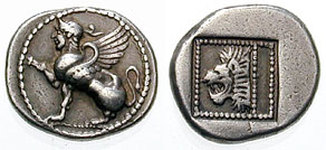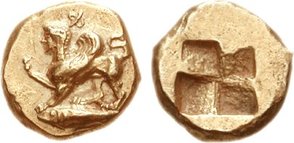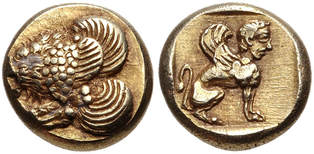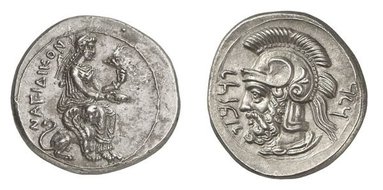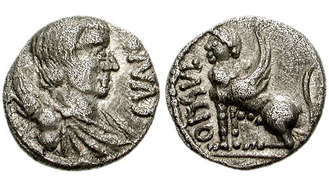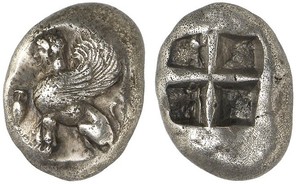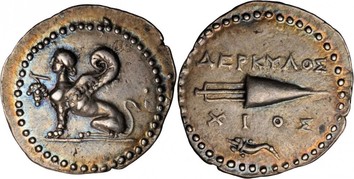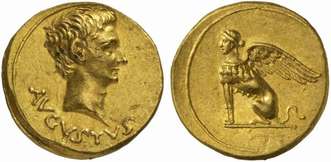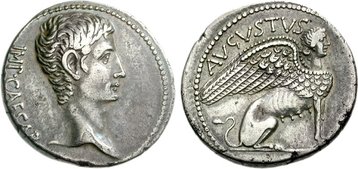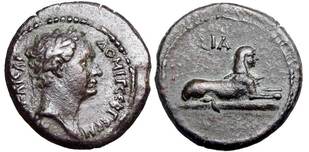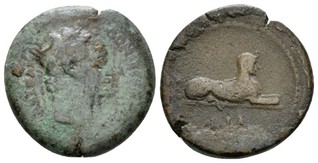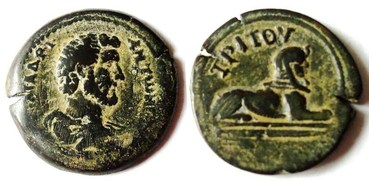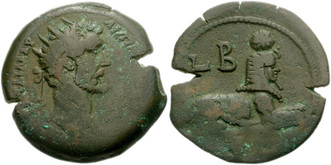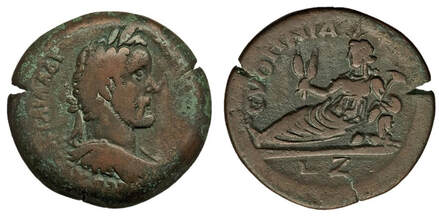The Great Sphinx
The Great Sphinx of Egypt, the largest and best known Sphinx, lies near the Great Pyramid in the Giza Valley Plateau, situated about six miles west of Cairo. It is the largest single sculpted statue in the world, carved from the bedrock of the plateau. The Sphinx is oriented due east facing the rising sun near the 30th parallel, and may well be the oldest monument on the Giza Plateau since long-term water weathering has been found in the great pit in which it lays.
The Western name "Sphinx" was given to it in antiquity based on the legendary Greek creature with the body of a lion and the head of a woman, though Egyptian sphinxes have the head of a man. The ancient Greek term itself is postulated to be a corruption of the ancient Egyptian Shesep-ankh. This name was applied to royal statues in the Fourth Dynasty though it came to be more specifically associated with the Great Sphinx in the New Kingdom.
In medieval texts, the names balhib and bilhaw referring to the Sphinx are attested, including Egyptian historian Maqrizi, which suggest Coptic constructions. The Egyptian Arabic name Abul-Hol, which translates as Father of Terror, came to be more widely used. No one is certain when the Sphinx was built nor what it represents, though many theories about its origin and purpose have been noted. It is commonly believed that the Sphinx was built by ancient Egyptians in the 3rd millennium BC.
Carved out of the surrounding limestone bedrock, the Sphinx is 57 metres (260 feet) long, 6 m (20 ft) wide, and has a height of 20 m (65 ft), making it one of the largest single-stone statues in the world. Blocks of stone weighing upwards of 200 tons were quarried in the construction phase to build the adjoining Sphinx Temple. The Sphinx faces due east, with a small temple between its paws. The temple resembles the sun temples that were built later by the kings of the 5th Dynasty.
The first attempt to dig it out dates back to 1400 BC, when the young Tutmosis IV, falling asleep beneath the giant head, dreamt that he was promised the crown if he would only unbury the Sphinx. The young prince immediately formed an excavation party which, after much effort, managed to dig the front paws out. To commemorate this effort, Tutmosis IV had a granite stela known as the Dream Stela placed between the paws. Ramesses II may have also performed restoration work on the Sphinx. In 1817 the first modern dig, supervised by Captain Caviglia, uncovered the Sphinx's chest completely. The entirety of the Sphinx was finally dug out in 1925.
The Western name "Sphinx" was given to it in antiquity based on the legendary Greek creature with the body of a lion and the head of a woman, though Egyptian sphinxes have the head of a man. The ancient Greek term itself is postulated to be a corruption of the ancient Egyptian Shesep-ankh. This name was applied to royal statues in the Fourth Dynasty though it came to be more specifically associated with the Great Sphinx in the New Kingdom.
In medieval texts, the names balhib and bilhaw referring to the Sphinx are attested, including Egyptian historian Maqrizi, which suggest Coptic constructions. The Egyptian Arabic name Abul-Hol, which translates as Father of Terror, came to be more widely used. No one is certain when the Sphinx was built nor what it represents, though many theories about its origin and purpose have been noted. It is commonly believed that the Sphinx was built by ancient Egyptians in the 3rd millennium BC.
Carved out of the surrounding limestone bedrock, the Sphinx is 57 metres (260 feet) long, 6 m (20 ft) wide, and has a height of 20 m (65 ft), making it one of the largest single-stone statues in the world. Blocks of stone weighing upwards of 200 tons were quarried in the construction phase to build the adjoining Sphinx Temple. The Sphinx faces due east, with a small temple between its paws. The temple resembles the sun temples that were built later by the kings of the 5th Dynasty.
The first attempt to dig it out dates back to 1400 BC, when the young Tutmosis IV, falling asleep beneath the giant head, dreamt that he was promised the crown if he would only unbury the Sphinx. The young prince immediately formed an excavation party which, after much effort, managed to dig the front paws out. To commemorate this effort, Tutmosis IV had a granite stela known as the Dream Stela placed between the paws. Ramesses II may have also performed restoration work on the Sphinx. In 1817 the first modern dig, supervised by Captain Caviglia, uncovered the Sphinx's chest completely. The entirety of the Sphinx was finally dug out in 1925.
|
|
The Sphinx of Chios
The coinage of Chios featured the sphinx. Although originally an Egyptian mythological creature, the Sphinx was adapted by the Greeks and appears frequently in Greek art. The Greek sphinx (which means strangler) became famous for the tale of "The Riddle of the Sphinx". There are several versions of this story but the most recounted (and shortest, Apollodoros 3.53-54) one is that Oedipus came to the city of Thebes where the city was in a state of distress. The city's king was dead and the citizens were plagued by a monster sent by Hera, the Sphinx. This creature had learned a riddle from the Muses, which it would ask the Thebans. Failure to answer the riddle correctly resulted in being ate by the Sphinx, and it was prophesied that Thebes would only be free of the Sphinx when the riddle had been solved.
The riddle was: "What is it that has one name that is four-footed, two-footed, and three-footed?" As no Theban had been able to answer the riddle, the regent of Thebes, one Creon - brother of the widowed queen, offered both the throne and his sister as wife to anyone who could solve it. Oedipus was the first to do so. He replied to the Sphinx that: "Man is the answer, for as an infant he goes upon four feet; in his prime upon two; and in old age he takes a stick as a third foot." Defeated, the Sphinx threw itself off the Theban acropolis, Oedipus became king of Thebes and husband of the widowed queen, whom he later learned to be his mother. |

